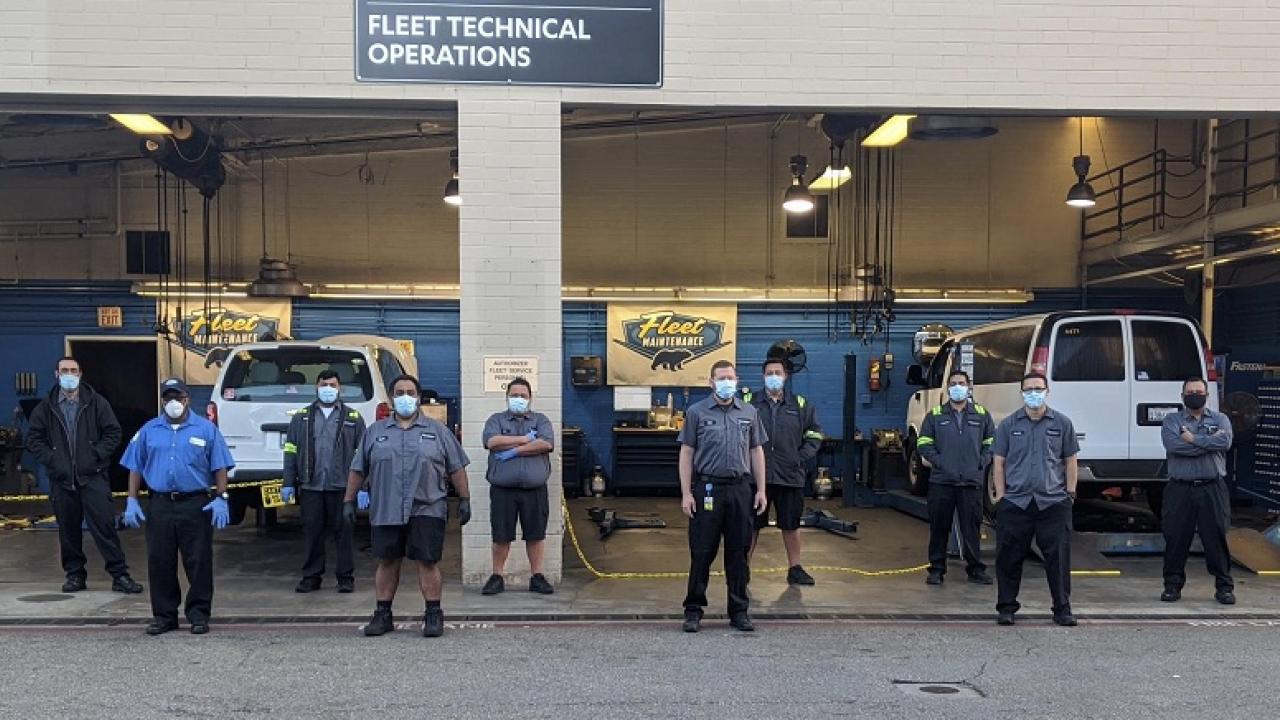The UCLA fleet received an exceptional distinction as the top university on the NAFA Fleet Management Association’s 100 Best Fleets national ranking recognizing peak-performing vehicle operations within the public fleet industry.
The prestigious 100 Best Fleets program recognizes top-performing public fleet operations in North and South America through an annual application-based process. UCLA is one of five universities, including the University of California at Davis, to make the list for 2021. Winners include small and large fleets from across the U.S.
To be named one of the best operations in the public fleet sector, fleet services are evaluated on criteria such as the use of technology, accountability, creativity, and resource stewardship, which includes practices that demonstrate a concern for the environment — an area where UCLA’s fleet shines.
UCLA Transportation is steadily increasing the use of environmentally sustainable transportation. Within UCLA’s fleet of 1,087 vehicles, 62% are alternative-fueled, with more than 300 zero-emission all-electric vehicles. By 2025, UCLA Transportation aims to run a carbon-neutral fleet, with the amount of carbon dioxide University vehicles are responsible for releasing into the atmosphere reduced as much as possible.
The fleet operation further lowers its environmental impact with a paperless work order system which improves efficiency and record-keeping. Additional innovations that led to the 100 Best Fleets win include automated parts vending machines, a customer access web portal, and telematics devices for monitoring motor health and accident detection.
UCLA’s fleet team demonstrated true excellence during the pandemic. With safety as the highest priority, enhanced cleaning procedures went into effect. The fleet leveraged good relationships with its vendors to secure additional safety supplies to share with departments in need, including the hospital, housing, and facilities.
On-site employees ensured vehicle operations for essential functions continued uninterrupted, including emergency and first responder vehicles. The fleet team even coordinated loaner vehicles from non-essential departments that were not using their vehicles with medical departments to ensure essential hospital caregivers had the flexibility and versatility to meet massive increases in demand. All these moving parts and more helped UCLA’s fleet earn recognition as one of the nation’s best fleets.






